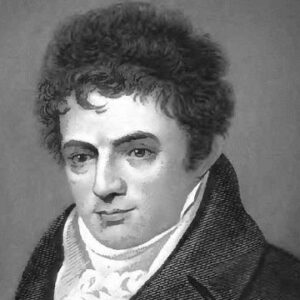Robert Fulton was an inventor and engineer who pioneered the commercialization of steamboats. Fulton was commissioned by Napoleon Bonaparte to build the first submarine, Nautilus. His other notable inventions were naval torpedoes. He began his career as an apprentice, creating miniature portraits for the purpose of designing lockets and rings. During his visit to Europe, he picked up various mechanical device techniques and kept himself busy experimenting with them. He developed a particular interest in inland water transportation during this time period. His interest resulted in the development of a system with two inclined planes. He was granted a British patent for this particular invention. He gradually devised a plan for cast iron aqueducts and a machine for digging. He is credited with inventing the first panorama, which was exhibited in Paris. In later years of his life, he built a 38-ton vessel named Fulton for the United States Government. It was the world’s first steam warship to feature central paddle wheels. Among his other remarkable inventions are numerous flax spinning machines, rope-making machines, and machines for sawing and polishing stones such as marble. He co-founded North River Steamboat with Robert Livingstone, the world’s first commercial steamboat.
Childhood & Adolescence
Robert Fulton was born in Little Britain, Pennsylvania, the son of Irish immigrants. He was raised alongside three sisters and a brother. His father was a farmer.
In 1771, his family lost their farm and relocated to Lancaster, where his father died in 1774. He was educated at home during his formative years. He later attended a Quaker school.
Career of Robert
He began his career as an apprentice in a Philadelphia jewelry store. Here he developed an expertise in miniature portraiture on ivory for the purpose of designing lockets and rings.
During his stay in Philadelphia, he met Benjamin Franklin and several other Revolutionary War figures. He intended to visit Europe at the time. In 1787, he traveled to London.
In London, he received several commissions to paint portraits and landscapes with the assistance of Benjamin West, an Anglo-American painter. Although he achieved some success, he did not see himself as having a bright future in painting.
In 1794, he shifted his focus to canal engineering. His initial assignment was to design a canal system to replace the existing locks.
In 1796, he published ‘Treatise on the Improvement of Canal Navigation,’ in which he proposed a comprehensive system of inland water transportation based on small canals that snaked through the countryside. Additionally, he patented a dredging machine and a variety of other inventions.
In 1797, he traveled to Paris and proposed the concept of a submarine, the ‘Nautilus,’ to be used in France’s war against Britain; however, the French government rejected the idea.
He built the submarine ‘Nautilus’ on his own dime in 1800. The submarine was used in the battle against the British but proved ineffective.
He decided to build a steamboat in 1801, after meeting Robert R. Livingstone. He experimented with the water resistance capacity of various hull shapes for this purpose. Regrettably, the boat he designed sank.
In 1804, he relocated to England and was commissioned by Prime Minister William Pitt to build a range of weapons for the Royal Navy. At the time, he invented the world’s first advanced naval torpedoes.
He arrived in New York in 1806, and immediately began construction on his steamboat Clermont. It was named after Robert Livingstone’s Hudson River estate. This boat was capable of covering the 150-mile distance in 32 hours.
In 1807, he co-developed the North River Steamboat with Robert Livingstone, the world’s first commercial steamboat. It ran between New York City and Albany, New York, along the Hudson River.
In 1810, he designed three boats that served on the Hudson and Raritan rivers. Steamboats designed by him supplanted horse ferries for river crossings in New York, Boston, and Philadelphia.
In 1811, he designed the ‘New Orleans,’ which was sent south to validate Livingston-steamboat Fulton’s monopoly in the New Orleans Territory. Later in life, he built three boats inspired by the design of the ‘New Orleans’.
In the same year, he was elected to the Erie Canal Commission, where he served until his death. Later in life, he designed Demologos, the world’s first steam-powered warship, for the US Navy during the War of 1812.
Personal History and Legacies
He married Harriet Livingstone in 1806. Robert, Julia, Mary, and Conelia were their four children.
He was soaked in icy water in 1815 while attempting to rescue a friend from the frozen Hudson River. He later developed pneumonia. He died as a result of his illness.
In 1816, the Commonwealth of Pennsylvania donated a marble statue of Fulton to the US Capitol Building’s National Statuary Hall Collection.
He was remembered for his pioneering design of steamship technology during the Hudson-Fulton Celebration of 1909 in New York City.
Estimated Net Worth
Robert is one of the wealthiest engineers and is listed on the list of the most popular engineers. Robert Fulton’s net worth is estimated to be around $10 million, based on our analysis of Wikipedia, Forbes, and Business Insider.
Trivia
BBC children’s television portrayed this extremely talented individual in popular shows such as ‘Triton’ and ‘Pegasus’. The Beach Boys’ album ‘Holland’ makes reference to this gifted engineer in the song ‘Steamboat’.


